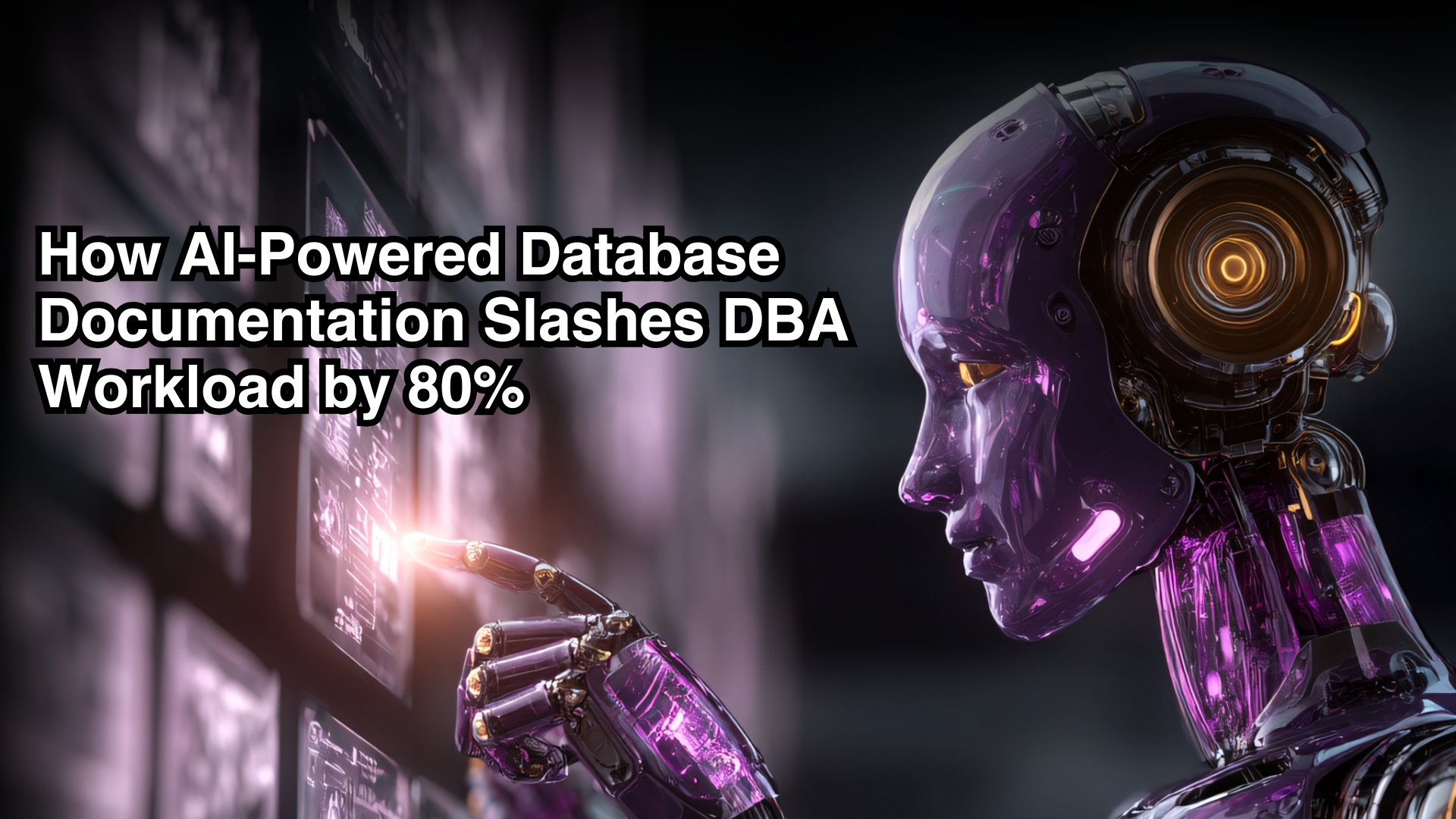In today’s data-driven world, organizations rely heavily on databases to store, process, and manage information efficiently. But as databases grow more complex, so do the risks of human error, data inconsistency, and compliance violations. Many data teams underestimate a simple but powerful safeguard against these challenges proper database documentation.
Database documentation is not just about keeping notes on tables, schemas, and queries. It’s a structured process of creating a living, accessible record that describes how data is organized, managed, and connected across systems. When done right, documentation minimizes confusion, ensures smooth collaboration among developers and analysts, and significantly reduces the likelihood of data errors or breaches.
In this article, we’ll explore how well-maintained database documentation reduces risks, improves data integrity, and contributes to long-term organizational resilience and how your team can start implementing it effectively.
What Is Database Documentation and Why Is It Crucial?
Database documentation refers to the detailed recording of all aspects of a database including its structure, design, relationships, stored procedures, triggers, and access permissions. It serves as a central source of truth for understanding how your database functions.
Without documentation, developers rely on tribal knowledge information passed through conversations, assumptions, or trial and error. This lack of transparency can quickly lead to:
- Errors during maintenance or updates due to unclear dependencies.
- Data corruption or duplication from improper query execution.
- Security loopholes arising from misunderstood access permissions.
- Compliance violations when audit trails are incomplete or inconsistent.
According to a 2024 survey by DataOps Research, over 68% of database-related errors stemmed from poor or outdated documentation practices. Proper documentation, therefore, is not a luxury; it’s a critical line of defense for your organization’s data health and accuracy.
How Poor Documentation Leads to Errors and Data Risks
Imagine a developer joining a project mid-cycle, tasked with modifying a table. Without clear documentation, they might misunderstand how certain columns are used in downstream reports or linked systems. A simple schema change could then cascade into broken integrations, inaccurate dashboards, or corrupted records.
Here’s how this scenario plays out in real life:
- Schema Changes Without Context – Without notes on dependencies or relationships, changes in one table can unintentionally affect others.
- Unclear Naming Conventions – Ambiguous field names like cust_id versus client_id can create duplicate or mismatched data entries.
- Inconsistent Query Logic – Developers may write redundant or conflicting queries due to a lack of visibility into existing stored procedures.
- Unauthorized Access or Data Exposure – Missing documentation on permission hierarchies can result in granting excessive privileges, leading to accidental or malicious data leaks.
These small missteps accumulate over time, compounding risk. The result? Increased debugging time, reduced data reliability, and potential compliance fines all preventable with structured documentation.
How Proper Database Documentation Prevents Errors
1. It Creates a Single Source of Truth
A well-documented database acts as a map of your data ecosystem. It clearly defines each table, column, relationship, and rule, eliminating guesswork. When every team member refers to the same documentation, consistency becomes the default.
This shared understanding reduces redundant development, avoids conflicting logic, and ensures that schema modifications don’t introduce new errors.
2. It Improves Change Management
In agile or DevOps environments, databases evolve rapidly. Proper documentation enables teams to track changes over time who made them, why, and what dependencies were affected.
For instance, a changelog within your documentation helps future developers understand previous decisions before implementing updates. This transparency prevents duplicate efforts and protects existing functionality.
3. It Enhances Data Validation and Quality Control
Documentation supports robust data validation processes. By outlining expected data types, ranges, and constraints, it guides developers in enforcing data integrity from the start.
For example, specifying that a field like email must follow a particular regex pattern ensures that invalid entries are caught early. Over time, these small checks dramatically reduce data inconsistencies and cleansing costs.
4. It Simplifies Troubleshooting
When issues arise, say, an inaccurate report or failed query well-documented databases help teams trace problems faster. Developers can immediately see how data flows, where transformations occur, and which dependencies are involved.
This not only shortens downtime but also improves response accuracy, since teams aren’t making assumptions under pressure.
How Database Documentation Reduces Data Risks
Beyond minimizing errors, documentation is central to risk management. In an era where data privacy and compliance are paramount, maintaining accurate documentation shields your organization from costly breaches or violations.
1. Supports Data Governance and Compliance
Regulations like GDPR, HIPAA, and SOC 2 demand transparency in how organizations collect, store, and handle data. Comprehensive documentation provides the audit trail necessary to demonstrate compliance.
For instance, GDPR Article 30 explicitly requires controllers to maintain records of processing activities, a task made easier when documentation already tracks data sources, access permissions, and retention policies.
2. Strengthens Access Control and Security
Documentation outlines who can access what, under what conditions, and why. This clarity helps enforce the principle of least privilege, a fundamental cybersecurity best practice.
When roles, permissions, and encryption policies are documented, organizations can regularly audit and refine their security protocols, minimizing the chance of accidental exposure.
3. Enables Faster Disaster Recovery
If a database failure or cyberattack occurs, having accurate documentation accelerates recovery. Teams can quickly identify backup locations, dependencies, and restoration procedures without relying on memory or guesswork.
A 2023 IBM Data Breach Report found that companies with well-documented recovery processes saved an average of $1.1 million compared to those without.
4. Promotes Trust and Accountability
When data documentation is accessible across departments, it fosters accountability. Analysts trust the data they’re using, managers can make informed decisions, and auditors can verify compliance. This collective trust reduces operational risk and supports a data-driven culture.
What Should Comprehensive Database Documentation Include?
To effectively reduce errors and risks, documentation must be detailed yet usable. Here’s what comprehensive documentation typically covers:
- Schema Diagrams and Entity Relationships: Visual maps showing how tables connect and interact.
- Table and Field Descriptions: Clear explanations of what each column represents, including data types and constraints.
- Stored Procedures, Triggers, and Functions: Detailed logic for automated operations or business rules.
- Access Permissions and Security Rules: A record of user roles, privileges, and encryption methods.
- Data Flow and Integration Points: Where data originates, how it’s transformed, and where it’s consumed.
- Change Logs and Version History: A record of schema modifications and the reasoning behind them.
- Backup and Recovery Procedures: Documentation for restoring data in case of corruption or loss.
The goal is to make your documentation so complete that a new developer could confidently work with the database without needing tribal knowledge.
Real-World Example: Database Documentation Preventing Errors
Consider a healthcare analytics company managing patient data across multiple hospitals. Initially, their systems lacked standardized documentation. When a developer updated a field in the patient table, it broke downstream dashboards used by medical staff leading to reporting delays and inaccurate diagnoses.
After implementing automated documentation with Dataedo, they created clear relational diagrams, defined field-level descriptions, and tracked all schema changes. Within months, error rates dropped by 42%, and compliance audit times were reduced by half.
This example highlights how documentation not only prevents technical errors but also safeguards lives and operational integrity.
Common Mistakes to Avoid in Database Documentation
- Documenting Too Late: Documentation should evolve alongside development, not after deployment.
- Focusing Only on Structure: Include business logic and context, not just schema details.
- Ignoring Non-Technical Users: Write explanations in plain language so analysts and auditors can interpret them.
- Letting It Become Outdated: Outdated documentation is worse than none. Automate updates where possible.
- Keeping It Private: Store documentation where all relevant stakeholders can access it securely.
Future Trends: AI and Automation in Database Documentation
Artificial Intelligence is revolutionizing how teams maintain and use documentation. Modern AI-driven tools can:
- Automatically detect schema changes and update diagrams in real-time.
- Generate natural language descriptions for tables and queries.
- Identify potential data quality issues or redundant structures.
- Suggest improvements for normalization or security policies.
In the near future, database documentation may evolve into an interactive knowledge layer, allowing developers to query documentation conversationally much like asking an AI assistant about your database’s structure or dependencies.
Conclusion
Database documentation is more than a best practice, it’s a strategic safeguard. It builds transparency, ensures continuity, and significantly reduces human and operational errors. When organizations invest in comprehensive, up-to-date documentation, they reduce data risks, enhance compliance, and empower teams to work confidently with accurate, reliable data.
Whether you’re managing a small internal database or a massive data warehouse, start treating documentation as a living asset not an afterthought. The payoff is fewer errors, stronger security, and a foundation for scalable, intelligent growth.
FAQ’s
Why is database documentation important for data accuracy?
Database documentation standardizes understanding across teams. It defines every field, constraint, and relationship, ensuring consistency and minimizing human error in query execution or schema changes.
How does documentation improve database security?
By clearly outlining roles, permissions, and encryption policies, documentation enforces the principle of least privilege, reducing the likelihood of unauthorized access or data leaks.
Can AI help automate database documentation?
Yes. AI-powered tools like Dataedo or dbt Docs can automatically extract schemas, generate relationship diagrams, and even summarize metadata in plain language, ensuring documentation stays updated in real time.
How often should database documentation be updated?
Ideally, documentation should update automatically through CI/CD pipelines. If manual, it should be reviewed after every schema modification, quarterly audits, or release cycle.




